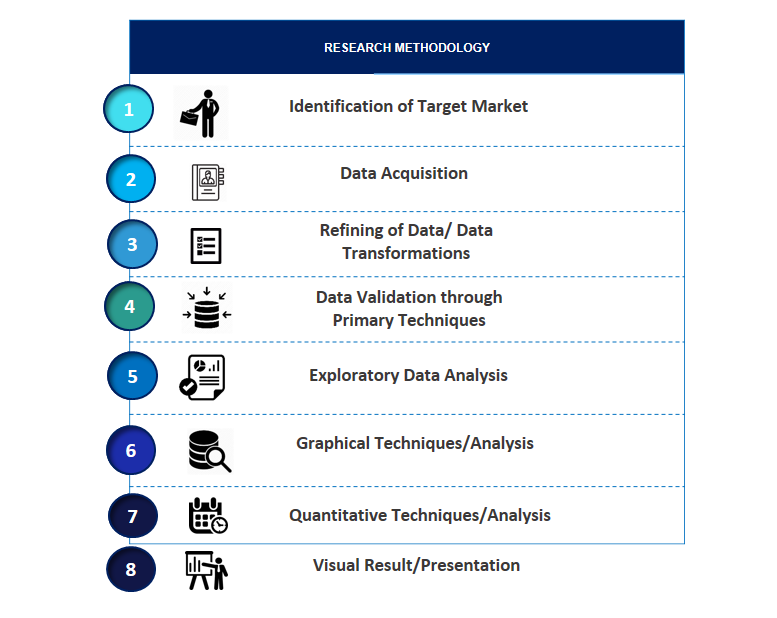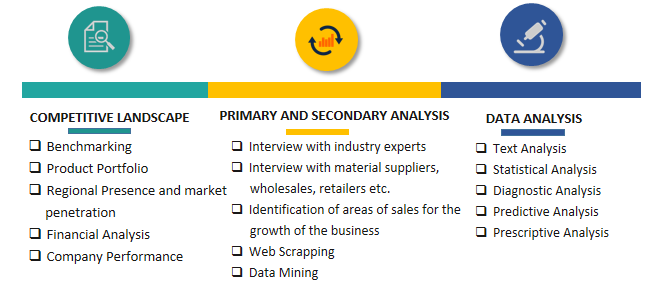
Aerospace Parts Manufacturing Market Growth, Size, Trends, Revenue, Share and Future Outlook
Aerospace Parts Manufacturing Market Size- By Product type, By Application, By End User- Regional Outlook, Competitive Strategies and Segment Forecast to 2033
| Published: Jan-2024 | Report ID: AERO2401 | Pages: 1 - 225 | Formats*: |
| Category : Aerospace and Defence | |||
- 2021: The first Manufacturing Blockchain® and Supply Chain Blockchain® solution for parts suppliers and buyers, SyncFab, has partnered with Kencoa Aerospace Corporation, a global manufacturing and materials company that specializes in aerospace and defense, to bring digital transformation convenience and efficiencies to shared industry-leading clients in the space, aerospace, and defense industries.
- 2020: After completing its acquisition of Ametek, Inc., a Pennsylvania-based company, Kymera International announced that it had acquired all of Reading Alloys's assets, including the development and manufacturing of titanium powder, thermal barrier coatings, and master alloys used in the aircraft industry. This expansion of the company's operations and product line was achieved.
-00442189012024.jpg)
-00442219012024.jpg)
| Report Metric | Details |
| Market size available for years | 2019-2033 |
| Base year considered | 2022 |
| Forecast period | 2023-2033 |
| Segments covered | By Product Type, By End User |
| Regions covered | North America, Asia-Pacific, Latin America, Middle East & Africa and Europe |
| Companies Covered | Boeing Company, Dassault Aviation, GENERAL ELECTRIC, Honeywell International Inc., Lockheed Martin Corporation Lufthansa Technik, PARKER HANNIFIN CORP, Rolls-Royce plc, Safran S.A. and Thales Group. |
- Aerospace Original Equipment Manufacturers (OEMs)
- Airlines and Commercial Operators
- Defense Organization
- Global Suppliers and Exporters
- Investors and Financial Institutions
- Maintenance, Repair, and Overhaul (MRO) Providers
- Technology Providers
- Tier 1, Tier 2, and Tier 3 Suppliers
- Others
| By Product type: |
|
| By End User: |
|
| By Region: |
|
- Global Aerospace Parts Manufacturing Market Size (FY’2023-FY’2033)
- Overview of Global Aerospace Parts Manufacturing Market
- Segmentation of Global Aerospace Parts Manufacturing Market By Product type (Aerostructure, Avionics, Cabin Interiors, Engines, Equipment, Insulation Components, Systems and Support)
- Segmentation of Global Aerospace Parts Manufacturing Market By End User (Business Aircraft, Commercial Aircraft, Military Aircraft and Others.)
- Statistical Snap of Global Aerospace Parts Manufacturing Market
- Expansion Analysis of Global Aerospace Parts Manufacturing Market
- Problems and Obstacles in Global Aerospace Parts Manufacturing Market
- Competitive Landscape in the Global Aerospace Parts Manufacturing Market
- Impact of COVID-19 and Demonetization on Global Aerospace Parts Manufacturing Market
- Details on Current Investment in Global Aerospace Parts Manufacturing Market
- Competitive Analysis of Global Aerospace Parts Manufacturing Market
- Prominent Players in the Global Aerospace Parts Manufacturing Market
- SWOT Analysis of Global Aerospace Parts Manufacturing Market
- Global Aerospace Parts Manufacturing Market Future Outlook and Projections (FY’2023-FY’2033)
- Recommendations from Analyst
1.1. Scope of the report1.2. Market segment analysis
2.1. Research data source
2.1.1. Secondary Data2.1.2. Primary Data2.1.3. SPER’s internal database2.1.4. Premium insight from KOL’s
2.2. Market size estimation
2.2.1. Top-down and Bottom-up approach
2.3. Data triangulation
4.1. Driver, Restraint, Opportunity and Challenges analysis
4.1.1. Drivers4.1.2. Restraints4.1.3. Opportunities4.1.4. Challenges
4.2. COVID-19 Impacts of the Global Aerospace Parts Manufacturing Market
5.1. SWOT Analysis
5.1.1. Strengths5.1.2. Weaknesses5.1.3. Opportunities5.1.4. Threats
5.2. PESTEL Analysis
5.2.1. Political Landscape5.2.2. Economic Landscape5.2.3. Social Landscape5.2.4. Technological Landscape5.2.5. Environmental Landscape5.2.6. Legal Landscape
5.3. PORTER’s Five Forces
5.3.1. Bargaining power of suppliers5.3.2. Bargaining power of buyers5.3.3. Threat of Substitute5.3.4. Threat of new entrant5.3.5. Competitive rivalry
5.4. Heat Map Analysis
6.1. Global Aerospace Parts Manufacturing Market Manufacturing Base Distribution, Sales Area, Product Type6.2. Mergers & Acquisitions, Partnerships, Product Launch, and Collaboration in Global Aerospace Parts Manufacturing Market
7.1. Global Aerospace Parts Manufacturing Market Value Share and Forecast, By Product type, 2023-20337.2. Aerostructure7.3. Avionics7.4. Cabin Interiors7.5. Engines7.6. Equipment7.7. Insulation Components7.8. System7.9. Support
8.1. Global Aerospace Parts Manufacturing Market Value Share and Forecast, By End User, 2023-20338.2. Business Aircraft8.3. Commercial Aircraft8.4. Military Aircraft8.5. Others
9.1. Global Aerospace Parts Manufacturing Market Size and Market Share
10.1. Global Aerospace Parts Manufacturing Market Size and Market Share By Product type (2019-2026)10.2. Global Aerospace Parts Manufacturing Market Size and Market Share By Product type (2027-2033)
11.1. Global Aerospace Parts Manufacturing Market Size and Market Share By End User (2019-2026)11.2. Global Aerospace Parts Manufacturing Market Size and Market Share By End User (2027-2033)
12.1. Global Aerospace Parts Manufacturing Market Size and Market Share By Region (2019-2026)12.2. Global Aerospace Parts Manufacturing Market Size and Market Share By Region (2027-2033)12.3. Asia-Pacific
12.3.1. Australia12.3.2. China12.3.3. India12.3.4. Japan12.3.5. South Korea12.3.6. Rest of Asia-Pacific
12.4. Europe
12.4.1. France12.4.2. Germany12.4.3. Italy12.4.4. Spain12.4.5. United Kingdom12.4.6. Rest of Europe
12.5. Middle East and Africa
12.5.1. Kingdom of Saudi Arabia12.5.2. United Arab Emirates12.5.3. Rest of Middle East & Africa
12.6. North America
12.6.1. Canada12.6.2. Mexico12.6.3. United States
12.7. Latin America
12.7.1. Argentina12.7.2. Brazil12.7.3. Rest of Latin America
13.1. Boeing Company
13.1.1. Company details13.1.2. Financial outlook13.1.3. Product summary13.1.4. Recent developments
13.2. Dassault Aviation
13.2.1. Company details13.2.2. Financial outlook13.2.3. Product summary13.2.4. Recent developments
13.3. GENERAL ELECTRIC
13.3.1. Company details13.3.2. Financial outlook13.3.3. Product summary13.3.4. Recent developments
13.4. Honeywell International Inc.
13.4.1. Company details13.4.2. Financial outlook13.4.3. Product summary13.4.4. Recent developments
13.5. Lockheed Martin Corporation
13.5.1. Company details13.5.2. Financial outlook13.5.3. Product summary13.5.4. Recent developments
13.6. Lufthansa Technik
13.6.1. Company details13.6.2. Financial outlook13.6.3. Product summary13.6.4. Recent developments
13.7. PARKER HANNIFIN CORP
13.7.1. Company details13.7.2. Financial outlook13.7.3. Product summary13.7.4. Recent developments
13.8. Rolls-Royce plc
13.8.1. Company details13.8.2. Financial outlook13.8.3. Product summary13.8.4. Recent developments
13.9. Safran S.A.
13.9.1. Company details13.9.2. Financial outlook13.9.3. Product summary13.9.4. Recent developments
13.10. Thales Group
13.10.1. Company details13.10.2. Financial outlook13.10.3. Product summary13.10.4. Recent developments
13.11. Others
SPER Market Research’s methodology uses great emphasis on primary research to ensure that the market intelligence insights are up to date, reliable and accurate. Primary interviews are done with players involved in each phase of a supply chain to analyze the market forecasting. The secondary research method is used to help you fully understand how the future markets and the spending patterns look likes.
The report is based on in-depth qualitative and quantitative analysis of the Product Market. The quantitative analysis involves the application of various projection and sampling techniques. The qualitative analysis involves primary interviews, surveys, and vendor briefings. The data gathered as a result of these processes are validated through experts opinion. Our research methodology entails an ideal mixture of primary and secondary initiatives.



Frequently Asked Questions About This Report
PLACE AN ORDER
Year End Discount
Sample Report
Pre-Purchase Inquiry
NEED CUSTOMIZATION?
Request CustomizationCALL OR EMAIL US
100% Secure Payment






Related Reports
Our Global Clients
Our data-driven insights have influenced the strategy of 200+ reputed companies across the globe.




















